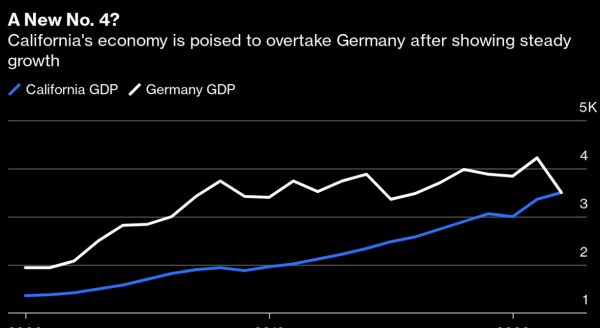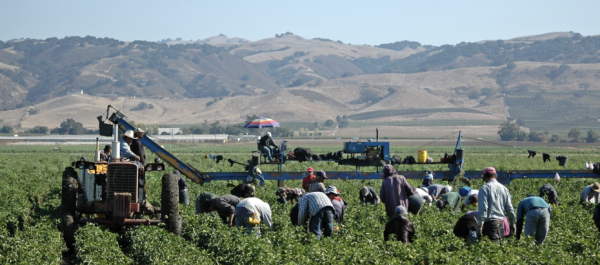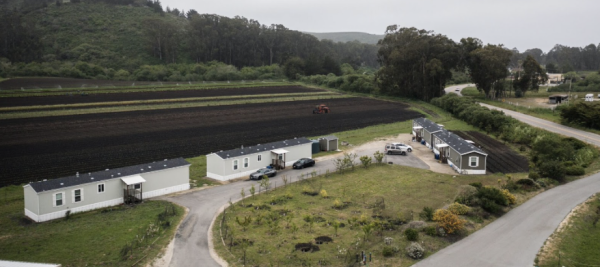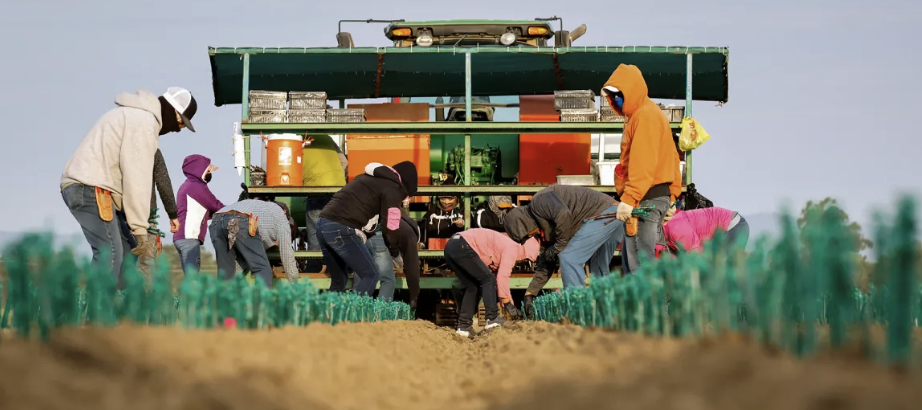It has been often stated that if California were its own country, it would be the 4th largest economy in the world. Home to the headquarters of Google, Apple, Disney, Netflix, and many other corporate giants, it is no surprise that the Golden State is often seen as the global epicenter of technology and entertainment. However, with so much of the world focused on its more glamorous trades, another vital California industry is often overlooked: agriculture.

Hosting over 500,000 farmworkers, California holds an incredible ⅓-½ of America’s agricultural workers, easily making the state first in the nation for agricultural production. Yet despite being such a dominant population, farmworkers are often mistreated, ignored, underpaid, and overworked, while the industry itself is continuously disrespected despite its necessity and importance. Often, the farmworkers who work tirelessly in order to feed America are left in a position where they can barely feed themselves. Thankfully, there are many young advocates who are eager to fight for the rights of California’s farmworkers.
This trend of under-appreciating our farmers permeates throughout the nation, not just in California. Although the agriculture industry has been a driving force in the United States economy, farmworkers are consistently subjected to low pay, irregular housing, and hazardous working conditions. This is largely due to the exclusion of farmworkers from the National Labor Relations Act of 1935: without this legislation extending to farmers, there is no form of law that protects farmers’ right to affiliate with a labor union without the threat of being fired from their employers. Without this provision and without this voice, farmworkers are unable to fight for better treatment and for a better and more fair industry.

Although their very trade is to feed American families with the produce and livestock they cultivate, many farmworkers spend hours laboring for a task for which they themselves cannot complete: putting food on their own tables. In 2022, farmers earned an average $16.62 per hour in 2022 according to the Economic Policy Institute — only 52% of the national average wage in 2022. Although the low levels of education that farmers often possess is a component of their low income, farmers still earn about $5.32 an hour less than non-farmworker counterparts with similar levels of education (i.e only having a.high school diploma).
The “piece-rate system” is defined as the system in which workers are paid a set price for each unit of product made, rather than a fixed wage that is paid for by the hour. This system, although traditional, is the main method in which farmers are being paid; however, it doesn’t necessarily mean that farmers are being paid less than minimum wage, as employers must still follow federal law and give livable wages. Nevertheless, it still drives farmers to skip breaks to meet their quotas, and those working on small farms do not even have such protections for minimum wage.
Yet, farmers are fundamentally underpaid, and because of this unreasonably low pay, farmworkers often find themselves in unreliable and inadequate housing, paying high rent for cramped, unclean spaces. Farm workers already struggle to find housing as their farms are often located in less developed areas with lower populations, forcing them to live with these unbearable conditions. According to a 2023 study conducted by the University of California Merced, which surveyed over 1,200 farmworkers across the state, 92% of farmworkers rent their living space, and of those 92%, about a quarter said they found cockroaches in their home; in total, around 17% found rodents, and 37% reported that their water tasted or looked unclean.

The Joe Serna Jr. Farmworker Housing Grant Program, or FWHG, is a financial assistance program meant to help low income farmworkers meet their needs and take care of their families. However, a regulation of the California Department of Housing and Community Development dictates that after six months, a family must leave their state-subsidized housing and move at least 50 miles away in order to be eligible for similar benefits the next year.
Colloquially known as the “50 Mile Rule,” not only does this legislation force farmworkers out of their homes and interfere with their children’s schooling, but it simply leaves these houses unvacated for no logical reasoning. Yet, in 2018, this regulation was edited to allow up to half the workers to keep their housing if they had children enrolled in local K-12 schooling. However, this provision to the “50 Mile Rule” is set to expire this year, meaning it must either be renewed or made permanent by the Department of Housing and Community Development. Currently, no news on either positive prospects have been announced, leaving many farmers in the dark as to how their near future will look like.
And just like how these unethical conditions have caught the attention of activists over America, these issues are now conversations of interest among young Archbishop Mitty activists. The junior religion class “ECJ: California” dives deeper into the issues that California farmworkers face, and during their ten-day immersion trip, the class visits the Center for Farmworker Families, an organization dedicated to building awareness for the issues that farmworkers face in California and Mexico.

During this leg of their trip, students speak to farmworkers and their families directly, building personal connections to the very individuals affected by the issues that they are learning about; in turn students gain further empathy and understanding of these communities affected. While being interviewed, Ms. Jamie Visser, Director of Campus Ministry and the religion teacher for ECJ: California, said that these connections are very important in getting students to realize the real effects that policies and law can have on people.
Attaching a personhood, a name, a story to a topic goes a long way in displaying the nuance present in these topics, and allows a student to more thoroughly analyze what they have learned. But education is only half the battle.
But the ECJ class is not the only Mitty program that helps its students promote and advocate for farmworkers’ rights. The Mitty Advocacy Project, aka MAP, hosts a yearly Farmworkers’ reality tour, where students are able to meet with farmworkers and discuss solutions to the problems that they face.
MAPx, one of the departments in MAP, has a history of advocating for the rights of California’s workers. In 2022, MAPx had an campus education campaign on the mistreatment of farmworkers, and earlier this school year, they also held a campaign for general workers’ rights. Varshitha Lingala ‘25, a MAPx lead, has expressed that it is important for students, especially those in privileged positions, to advocate for farmworkers and others who may not have a voice.
When asked if MAPx will continue to advocate for farmworkers, Lingala said “I do think we could do more, and we should,” adding that “the fight for farmworkers’ rights is far from over.”


